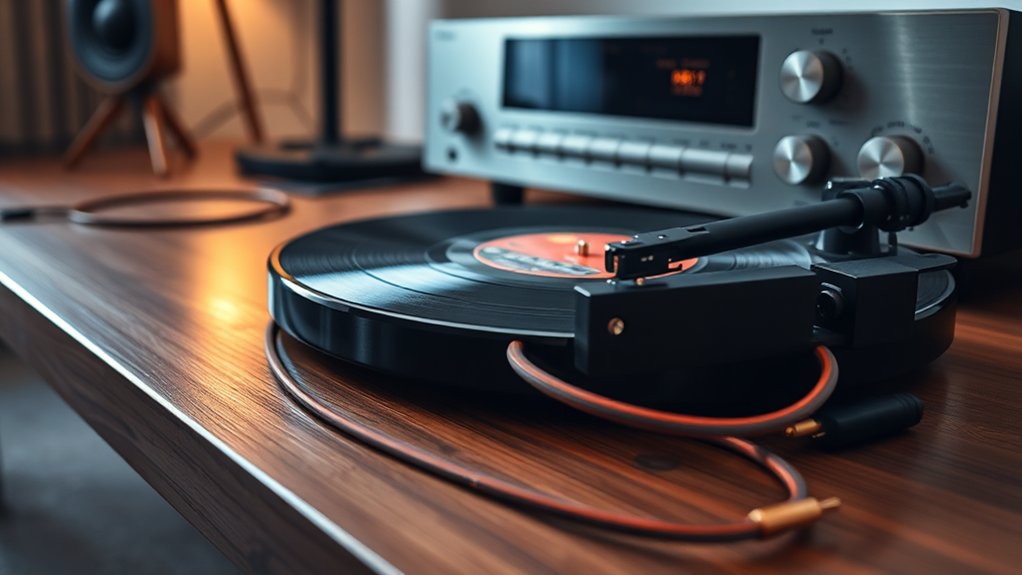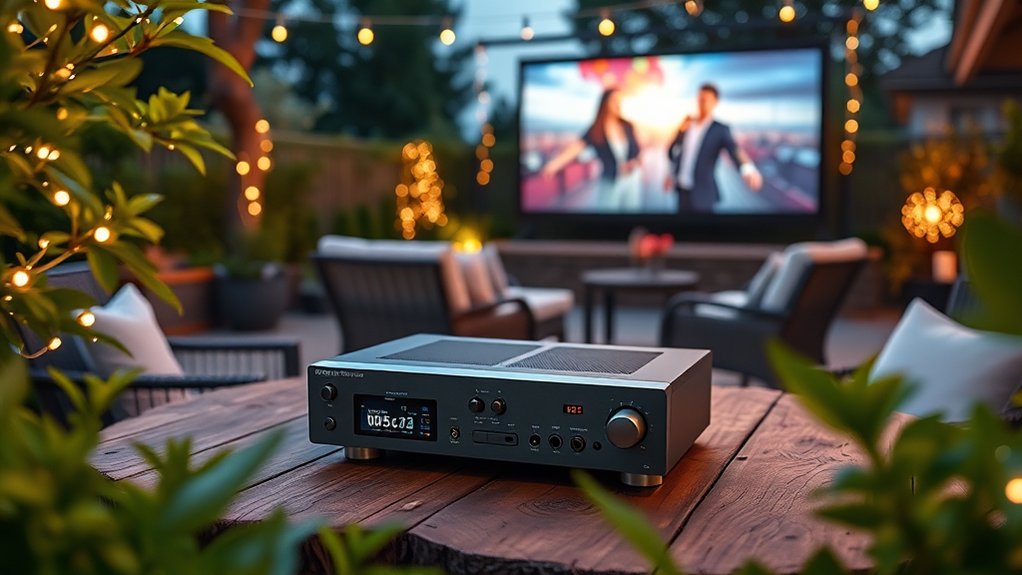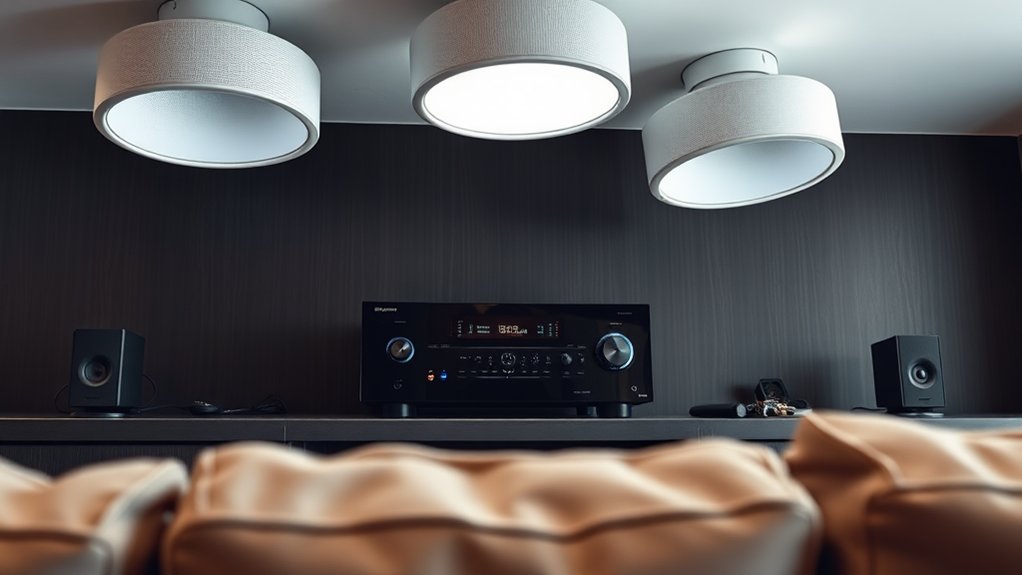To connect your turntable to an AV receiver, start by placing it on a stable surface away from any speakers—trust me, feedback isn’t your friend! If your receiver has a phono input, plug the turntable’s RCA output cables directly into it. If not, consider using an external phono preamp to amplify the weak signal. Just remember to ground everything properly. Curious about troubleshooting annoying sound issues or optimizing your setup further? Stick around for more tips!
Key Highlights
- Position the turntable on a stable surface, away from speakers and using isolation pads to prevent vibrations.
- Connect the turntable’s RCA output to the AV receiver’s phono input or use an external phono preamp if necessary.
- Ensure the receiver has the correct “Phono/Line” setting to amplify the signal appropriately.
- Maintain secure and clean connections to prevent audio distortion or unwanted hum.
- Troubleshoot any sound issues by checking cable placements and ensuring no interference from power sources.
Placement and Initial Setup
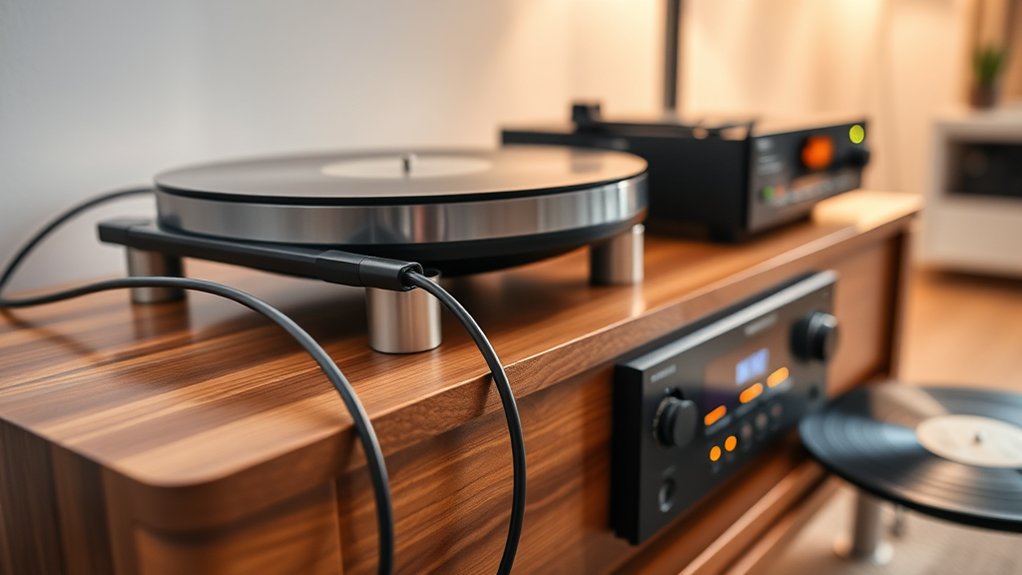
When diving into the world of vinyl, placement and initial setup of your turntable can make all the difference—think of it as laying a solid foundation before building a house.
You’ll want to place your turntable on a stable, flat surface, ideally close to your AV receiver to keep cable lengths short and minimize signal loss. Avoid spots near speakers or subwoofers to dodge unwanted feedback and hum. All four components are necessary for a complete audio setup, so ensure you have them on hand as you begin this journey. Additionally, it’s important to ensure your receiver has a phono input to achieve the best audio quality when making connections.
Consider using isolation pads to absorb vibrations, ultimately safeguarding your stylus and enhancing sound quality. Keep it away from direct sunlight and heat, and guarantee a clean, tidy environment around it.
Connecting With a Built-in Phono Preamplifier
Connecting a turntable to an AV receiver can feel intimidating, but if your turntable has a built-in phono preamplifier, you’re already one step ahead. With this feature, you can easily connect the turntable’s RCA output cables directly into a standard line-level input, like AUX or CD, on your receiver. Look out for a switch labeled “Phono/Line” to verify you’re sending the right signal. This built-in preamp amplifies your signal to line level, making it compatible with AV receivers that lack a dedicated phono input—no need to worry about audio distortion from double amplification! Additionally, the signal generated by the stylus movement in record grooves requires amplification to standard playback levels, which is exactly what your built-in preamp provides. Connecting the turntable is a simple and direct connection method, ensuring a smooth setup. Just secure your connections, power up, and enjoy the music—after all, who doesn’t love the warm crackle of vinyl?
Using an External Phono Preamplifier
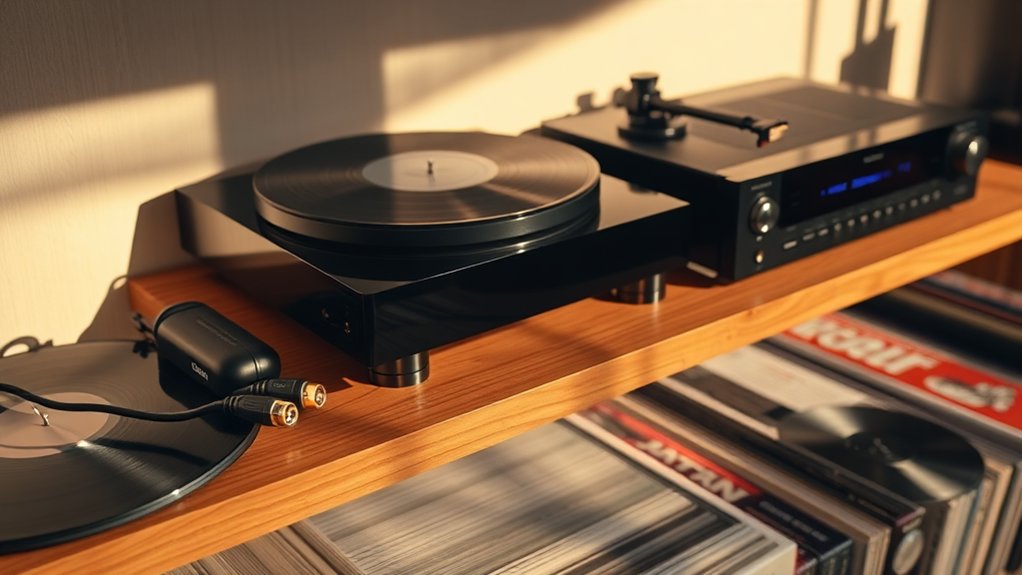
An external phono preamplifier can be a game-changer for your vinyl experience, especially if your turntable or AV receiver doesn’t have built-in support for the low-level phono signal. This little wonder converts your turntable’s sound into a stronger line-level signal, making it compatible with your AV receiver. Plus, it applies the RIAA equalization, correcting tonal imbalances by boosting those deep bass notes as it tones down the treble frequencies. To set it up, just connect your turntable’s output to the preamp input, then run another RCA cable from the preamp to the receiver’s AUX input. Remember to check for proper grounding—nothing ruins vinyl vibes like unwanted hum! If your audio system lacks a phono input, using a phono preamp becomes essential for achieving optimal sound quality.
Understanding Signal Levels and EQ
Understanding signal levels and equalization is crucial for getting the best sound from your turntable setup, especially since vinyl audio can seem a bit complicated at first glance.
You see, turntables generate phono output signals ranging from about 0.0002 V to 0.007 V—much lower than the line-level signals most audio gear expects. This means you’ll need amplification and, typically, RIAA equalization to get that audio just right.
Ever plugged a phono output directly into a line input? It’s basically like trying to yell underwater!
By using a phono preamp, you boost those weak signals as you restore tonal balance, making for rich, authentic sound.
Troubleshooting and Tips
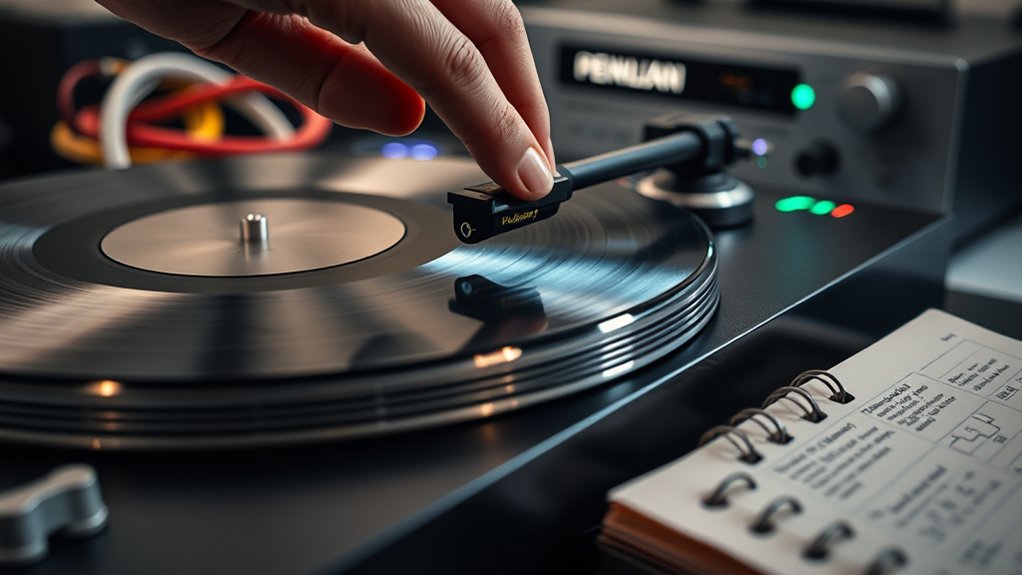
Once you’ve set up your turntable with the proper signal levels and equalization, it’s not uncommon to run into a few hiccups along the way.
First, check your placement; avoid setting your turntable directly on speakers or amplifiers, as this can cause unwanted feedback—nobody wants a vinyl record turning into a rattling disaster!
If noise persists, inspect your RCA cables for secure connections and try repositioning them away from power cords.
Don’t forget to verify your phono preamp settings; mismatches can lead to over-amplification or distortion, which is more annoying than realizing that your turntable’s needle needs a replacement.
Finally, keeping your tonearm connections clean and tight can improve sound clarity and reduce hum.
Happy listening!
Frequently Asked Questions
Can I Connect Multiple Turntables to One Receiver?
Yes, you can connect multiple turntables to one receiver. Just use a DPDT switch, a multi-input phono preamp, or an audio switcher. Confirm proper grounding and check preamp settings to avoid signal issues.
What Type of Records Can I Play on a Turntable?
You can play 7-inch, 10-inch, and 12-inch vinyl records on your turntable. Just verify your turntable supports the record sizes and speeds, like 33 1/3 RPM and 45 RPM, for ideal playback quality.
How Can I Improve Sound Quality From My Turntable?
To improve sound quality from your turntable, regularly clean your records, upgrade the cartridge, and guarantee proper setup. Invest in high-quality cables and isolate your turntable from vibrations for the best performance.
Are There Special Cables Needed for Connecting a Turntable?
You won’t need special cables for connecting a turntable; standard RCA cables suffice. Just remember to include a ground wire to minimize hum and guarantee your audio quality remains clear and enjoyable.
What Should I Do if My Turntable Skips?
If your turntable skips, first clean the record and stylus. Check the leveling, tracking force, and anti-skate settings. Verify proper storage and handling of records to prevent warping or damage. Regular maintenance keeps playback smooth.

